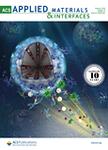版权所有:内蒙古大学图书馆 技术提供:维普资讯• 智图
内蒙古自治区呼和浩特市赛罕区大学西街235号 邮编: 010021

作者机构:Dow Chem Co USA Midland MI 48674 USA
出 版 物:《ACS APPLIED MATERIALS & INTERFACES》 (美国化学会应用材料与界面)
年 卷 期:2020年第12卷第9期
页 面:11287-11295页
核心收录:
学科分类:0817[工学-化学工程与技术] 08[工学] 0805[工学-材料科学与工程(可授工学、理学学位)]
主 题:PTIR waveguides silicone resin low-loss photopatterned migration
摘 要:Crossing losses in silicone optical waveguides are related to the magnitude and spatial extent of the waveguide refractive index gradient. When processing conditions are altered, the refractive index gradient can vary substantially, even when the formulation remains constant. Controlling the refractive index gradient requires control of the concentration of small molecules present within the core and clad layers. Developing a fundamental understanding of how small molecule migration drives changes in crossing loss requires the ability to examine chemical functionality over small length scales, which is a natural fit for atomic force microscopy-infrared spectroscopy (AFM-IR). In this work, AFM-IR spectra from model bilayer stacks are initially examined to understand molecular migration that occurs from heating the core and clad layers. The results of these model studies are then applied to photopatterned waveguide builds, where structure-function relationships are constructed between values of crossing loss and the concentration of C-H and O-H functionalities present in the core and clad layers. Results show that small molecule evaporation and migration are competing processes that need to be controlled to minimize crossing loss.